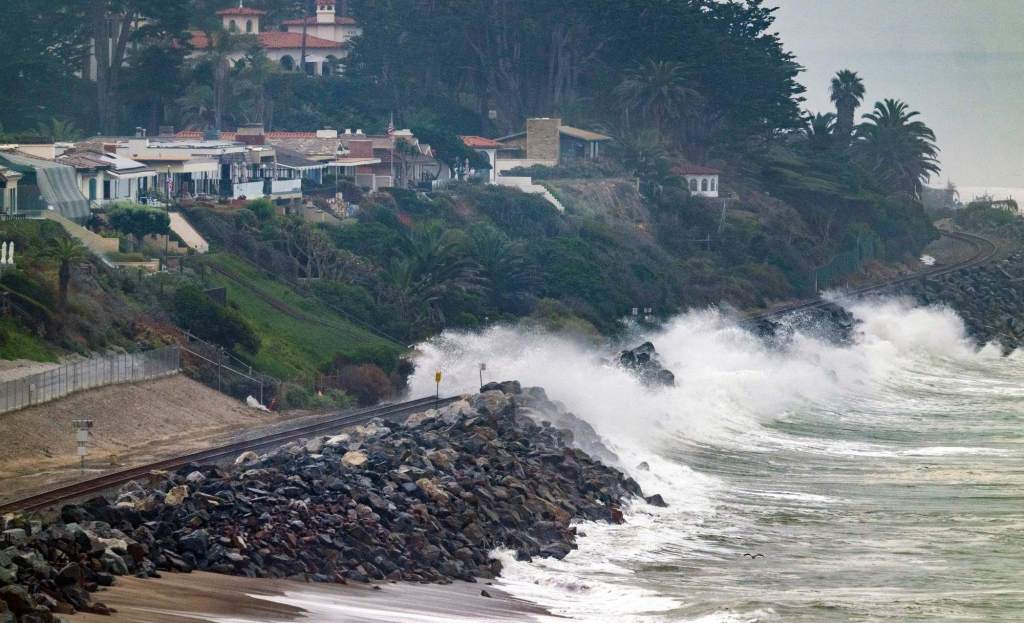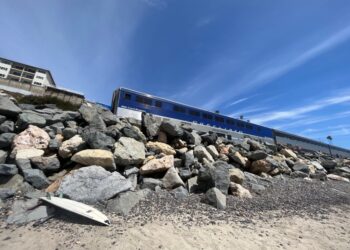It was a “listening session,” with county transportation officials hoping to gain stakeholder feedback for their plans to protect the rail line that runs along the coast through San Clemente and Dana Point, and the message they heard was loud and clear:
Sand, not bulkier rock boulders and walls, should be the solution to protect the troubled tracks.
So argued residents and San Clemente city leaders, who pleaded with Orange County Transportation Authority presenters during a March 20 meeting to discuss proposals to keep the rail line moving. The meeting, in San Clemente, came in the wake of five closures of the rail line in recent years, and million of dollars spent to protect it — the result of the ocean eating up the beach and battering the tracks, as well as rain soaked hills crashing down.
Communities up and down the California coast are facing similar issues.
As beaches disappear, the ocean routinely batters harder parts of the coast, such as rocks and cliffs.
That, in turn, is forcing coastal communities to make choices about how best to protect vulnerable (and valuable) property and infrastructure: Are rocks and man-made seawalls the solution? Or should nature-based adaptations, including sand, be used as a buffer to hold back the sea?
Discussions this week in San Clemente, both at a March 19 council meeting and during the OCTA town hall held the next morning, spotlight challenges facing the quaint coastal city as it tries to figure out how to bolster, or at least keep what little remains, of its sandy beaches.
The OCTA’s recent efforts to armor the area — and a recent $200-million proposal to bring even more rock boulders and a half-mile-long wall to the coast in an attempt to protect the rail — have raised concerns among residents, activist groups and experts who believe rocks exasperate the cycle that leads to coastal erosion. Experts believe that when waves reach the solid rocks or seawalls, it then scours even more sand away and…
Read the full article here







